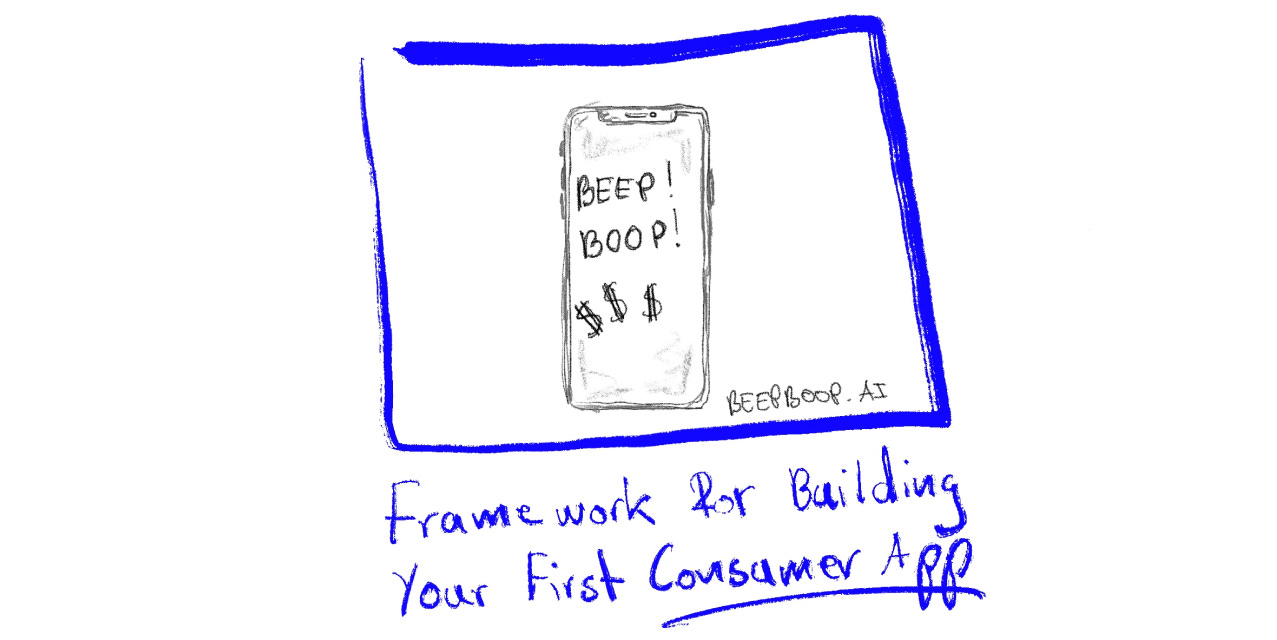Framework for Building Your First Consumer App
An exercise in focus.
I talk with at least five first-time founders per week who want to build a consumer app.
Most of my career so far has been in consumer: AnchorFree had one of the most popular VPNs in the world, installed by 500M+ users. Chestr, my first startup, was not installed by 500M+ users, but loved by a few thousand. Ever since, I’ve built numerous other consumer apps.
There are many reasons to love consumer: it’s fun to build something you and your friends can use…and it’s also sexy and cool. Much, much cooler than B2B SaaS.
But it’s also harder. Users are fickle. Revenue is difficult. VCs hate it, and for good reason. Even if you can reach some success, it’s an unpredictable rollercoaster that can crash and burn at any time. Ergo “First-time founder B2C, second-time founder B2B.'“
Yet, I still think that it’s a good idea to build a consumer app as your first project. Nothing will teach you more about the power of focusing on one feature and obsessing with your users.
Step-by-Step Framework
Value Prop: Have One, and Only One
Solve one thing first. This is the headline of your landing page, and the opening line of your TikTok video. The challenge here is to focus. Most first-time founders fail at being able to focus on one key feature. One thing, and one only.
Chestr → “A Universal Wishlist for all your shopping”
ZengAI → “Hyper-personalized guided meditations”
WordRushAI → “Expand your vocabulary using AI”
It doesn’t need to be groundbreaking. You’re not selling to Steve Jobs or Marc Andreessen, you’re selling to an average Joe who is getting spammed with one million other ads. Plus, it’s beautiful to do one think really well.
"Take a simple idea and take it seriously."—Charlie Munger
Design the Entire User Flows
This part always takes me longer than I think it will.
But before you write a single line of code, you need to design the entire flow, or otherwise coding will take forever.
If there are many flows, you have too many features in your V1; you have failed to focus on one key feature.
After you design the flows, you can design the UI (or hire someone to do it).
Build V1 and Launch NOW!
If you’re technical, pretty self-explanatory. If you are not technical, find your technical partner in crime. If you don’t have a technical co-founder, as a first-time founder, your idea is dead in the water.
Launch your V1 ASAP. Don’t fall prey to the rut of endless buildings without users. This leads to the delusion that you’re not getting users because you don’t have enough features. So you build more features no one wants. It’s a vicious cycle.
The reality is either 1) your product is not focused enough, or 2) there’s no need for the one feature you’re focused on.
Distribute With Friends → Network → Socials → Ads
You can distribute and test the app in numerous ways—friends, Reddit, and, yes, paid ads. Test with friends first to find bugs, then distribute to more users.
Obsesses Over User-Feedback
A great founder will be able to intuit his user needs based on analytics and their feedback. The user installed your app based on your one key feature: but did the feature fulfill its promise? If yes, make it sharper. If not, figure out why.
Practically, you should get feedback via 1) Analytics: Hotjar, Posthog, Mixpanel, and Google Analytics1; and 2) user interviews, I’ve written more about this here.
Iteration Cycles: Repeat steps 3, 4, and 5 until you reach PMF
You can prove PMF by — in order from weakest to strongest— waitlists (1000+), high retention, and subscribers.
Other
Build a subscription-based app as your first one, nothing stronger than $ as a sign of PMF
Super-focused one-feature apps I subscribe to: Coachify.AI, ProteinPal2, Speechify
Most “growth hacks” are useless and outdated; real hackers are not sharing their tricks
But if I were to recommend one source of expertise, it’s Nikita Bier
Other readings: a16z consumer benchmarks by Bryan Kim, “10 years after growth hacking” by Andrew Chen, Sequoia Arc’s PMF framework







Awesome
🔥🔥